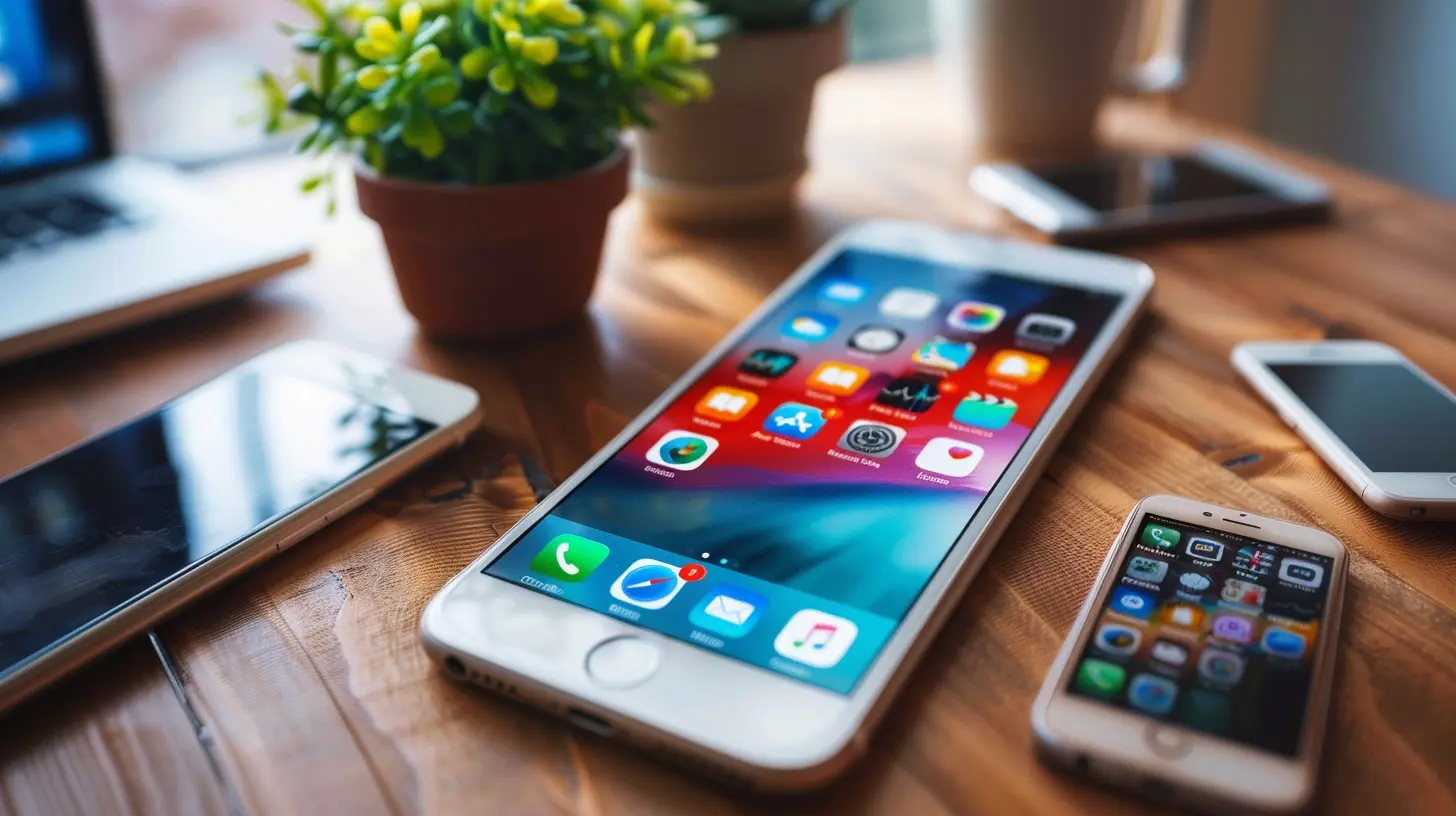How Mobile Apps Are Transforming Online Shopping
11 July 2025
Let’s be real — when was the last time you bought something online using a computer? It’s likely been a while, right? Today, grabbing your phone, tapping an app, and ordering what you need in seconds has become the new norm. Mobile apps aren’t just changing online shopping; they’re completely rewriting the rules of the retail game.
In this article, we’re diving deep into how mobile apps are shaking up the ecommerce scene. We’ll explore the tech, the trends, and the reasons why mobile shopping apps are winning hearts (and wallets). So, let’s get into it.
The Rise of Mobile Commerce (mCommerce)
mCommerce: More Than Just a Trend
Mobile commerce, or mCommerce, isn’t just a buzzword. It's a massive shift in how we shop. According to recent stats, over 70% of online purchases now happen through mobile devices. Yep, that’s right — your phone isn’t just for selfies and Instagram anymore.Mobile apps have become the go-to choice for online shoppers because they’re fast, convenient, and usually built with better user experiences than mobile websites. They store your preferences, remember your payment info, and make reordering a piece of cake. Add in push notifications and one-tap checkout, and you've got a recipe for sales skyrocketing.
Why Mobile Apps Beat Mobile Websites
Speed and Performance
Let’s face it — mobile websites can be slow, clunky, and frustrating. In contrast, apps are optimised for performance. They load faster, don’t rely on a constant internet connection, and offer smoother navigation. It’s like comparing a Ferrari to a tricycle when it comes to speed.Personalisation at Its Finest
Ever notice how your favorite shopping app seems to know exactly what you need? That's not magic — it’s data. Mobile apps track your behavior, preferences, and shopping patterns to tailor your experience. And that kind of personal touch is what keeps users hooked.It’s almost like your shopping app becomes a personal shopper, curating products you’ll love before you’ve even searched for them.
Offline Access
Another big win for mobile apps is offline functionality. While websites are totally dependent on the internet, many apps allow you to browse past views, save items, or even add to carts without being online. That’s huge when your Wi-Fi decides to be moody.
Features That Are Revolutionizing Shopping Apps
Push Notifications: A Direct Line to Users
Push notifications are one of the most powerful tools in a retailer’s arsenal. Think about it — your favorite app pings you with a 20% off coupon or alerts you when your size is back in stock. That instant connection boosts engagement and increases conversions like crazy.But there’s a balance. Overdo it, and users will mute or uninstall your app. Do it right, and you’ve got their attention every time.
One-Click Payments and Digital Wallets
Remember the days of typing in your credit card number for every purchase? Yeah, me neither. Mobile apps have simplified payment processes through one-click buying, stored cards, and integrations with services like Apple Pay, Google Pay, and PayPal.This not only saves time but also reduces cart abandonment — a major pain point for online retailers.
Augmented Reality (AR)
Ever wish you could see how that couch would look in your living room before buying it? Thanks to AR, now you can. Apps from brands like IKEA let you project virtual products into your actual space.AR is taking the guesswork out of online shopping and making it more interactive — and fun. Shopping isn't just a task anymore; it’s an experience.
Voice Search and AI Integration
With smart assistants like Siri, Alexa, and Google Assistant on the rise, mobile shopping apps are integrating voice search. It’s hands-free shopping — literally.AI is also powering chatbots, product recommendations, and dynamic pricing in mobile apps. The smarter the app, the better the shopping experience.
How Mobile Apps Are Influencing Consumer Behavior
Instant Gratification
We live in an on-demand culture. Mobile apps feed into that by offering instant access to products, speedy checkouts, and same-day deliveries. The entire shopping journey — from decision to doorstep — can be completed in a few taps.FOMO and Flash Sales
Apps are masters at creating urgency. Limited-time offers, app-exclusive deals, and flash sales turn casual browsers into impulsive buyers. It’s retail psychology 101, and it works like a charm.Social Commerce Integration
Mobile apps aren’t evolving in isolation. They’re merging with social media platforms to create a seamless shopping loop. Platforms like Instagram and TikTok now offer in-app shopping experiences powered by ecommerce apps.We're seeing a shift where scrolling through your feed can instantly lead to purchases without ever leaving the app. That’s retail therapy for the digital age.
The Impact On Retailers and Brands
More Data, Smarter Decisions
Mobile apps generate a goldmine of data. Retailers can track which products get viewed most, what time users shop, how long they browse, and where they drop off. This insight helps them fine-tune their strategies, from inventory management to marketing campaigns.Building Brand Loyalty
Apps give brands a direct line to their customers. Loyalty programs, gamification, and app-only perks keep users coming back. It’s much easier to build repeat business when you've got a dedicated app icon living on someone’s home screen.Expanding Global Reach
Mobile apps break down geographical barriers. A boutique in London can sell to a customer in Tokyo without blinking. With the right localization and currency support, apps open doors for global expansion.Challenges and Considerations
Let’s not pretend this is all sunshine and rainbows. There are hurdles, too.High Development and Maintenance Costs
Creating a top-notch shopping app isn't cheap. It requires skilled developers, UI/UX designers, ongoing updates, security patches, and support. For smaller businesses, that upfront investment can be daunting.App Fatigue
With hundreds of apps vying for space on your phone, users get picky. If your app isn’t bringing real value, it risks being deleted. Retailers need to continually innovate and optimize to stay relevant.Privacy and Security
Handling users’ personal and payment data means walking on ethical and legal eggshells. With regulations like GDPR and CCPA tightening the grip, retailers must prioritize secure, transparent data practices.What’s Next? The Future of Mobile Shopping Apps
The future of mobile commerce looks fascinating and fast-paced.- AI-Powered Virtual Assistants: Think of a Siri for shopping that knows your taste better than you do.
- Hyper-Personalisation: Machine learning will ensure your app experience is uniquely “you.”
- Voice and Gesture-Based UIs: Shopping could become as simple as speaking or swiping in the air.
- Blockchain-Based Transactions: For added transparency and security.
As technology evolves, shopping apps will blur the lines between physical and digital shopping even more — offering hybrid experiences that are smart, seamless, and seriously addictive.
Final Thoughts
Mobile apps have done more than redefine online shopping — they’ve reimagined it. From blazing-fast checkouts to personalized recommendations and immersive experiences, apps have turned what used to be a transaction into an engaging journey.If you’re a business owner and you’re not investing in a mobile app yet, you might want to rethink that. And if you’re a consumer? Well, your next impulse buy is probably just one tap away.
It’s clear — the future of ecommerce is in our pockets.
all images in this post were generated using AI tools
Category:
Mobile AppsAuthor:

Ugo Coleman
Discussion
rate this article
2 comments
Jenna Pratt
Mobile apps are revolutionizing online shopping by enhancing user experience, streamlining purchases, and providing personalized recommendations. This shift not only boosts sales but also fosters customer loyalty in a competitive market.
November 1, 2025 at 3:45 AM

Ugo Coleman
Thank you for your insightful comment! I agree that mobile apps are indeed transforming online shopping by improving user experience and fostering customer loyalty.
Summer Reese
This article captures the profound impact of mobile apps on online shopping. As convenience and personalization become paramount, it’s clear that these tools are redefining consumer behavior. Reflecting on my own experiences, I appreciate how mobile innovation continuously enhances the shopping journey.
July 15, 2025 at 5:01 AM

Ugo Coleman
Thank you for your insightful comment! I’m glad you found the article resonates with your experiences and highlights the transformative role of mobile apps in online shopping.


